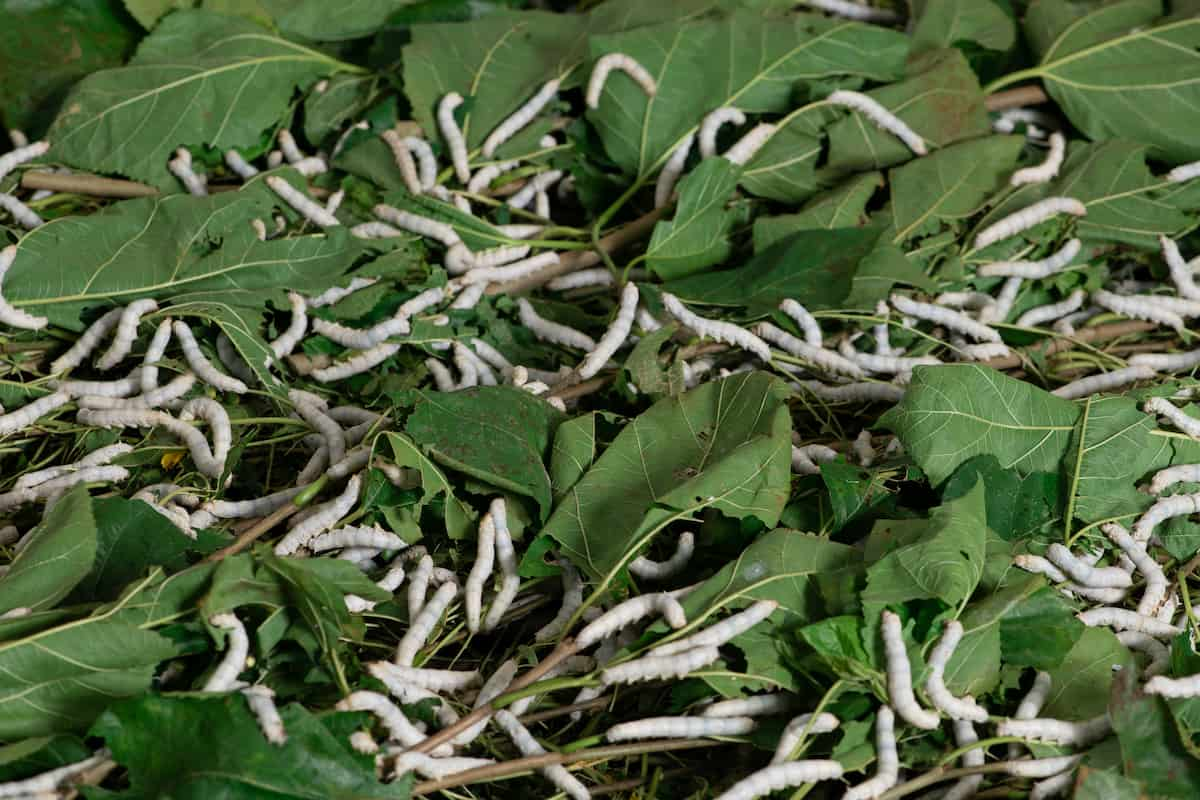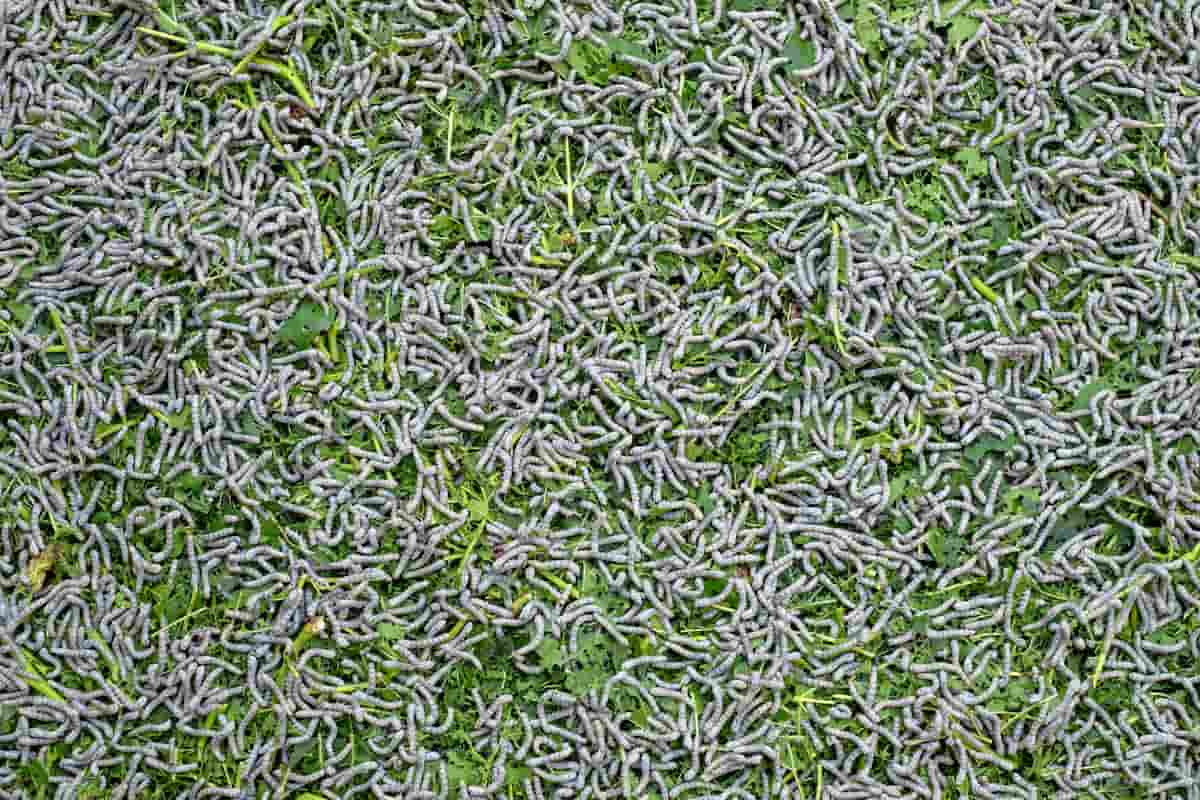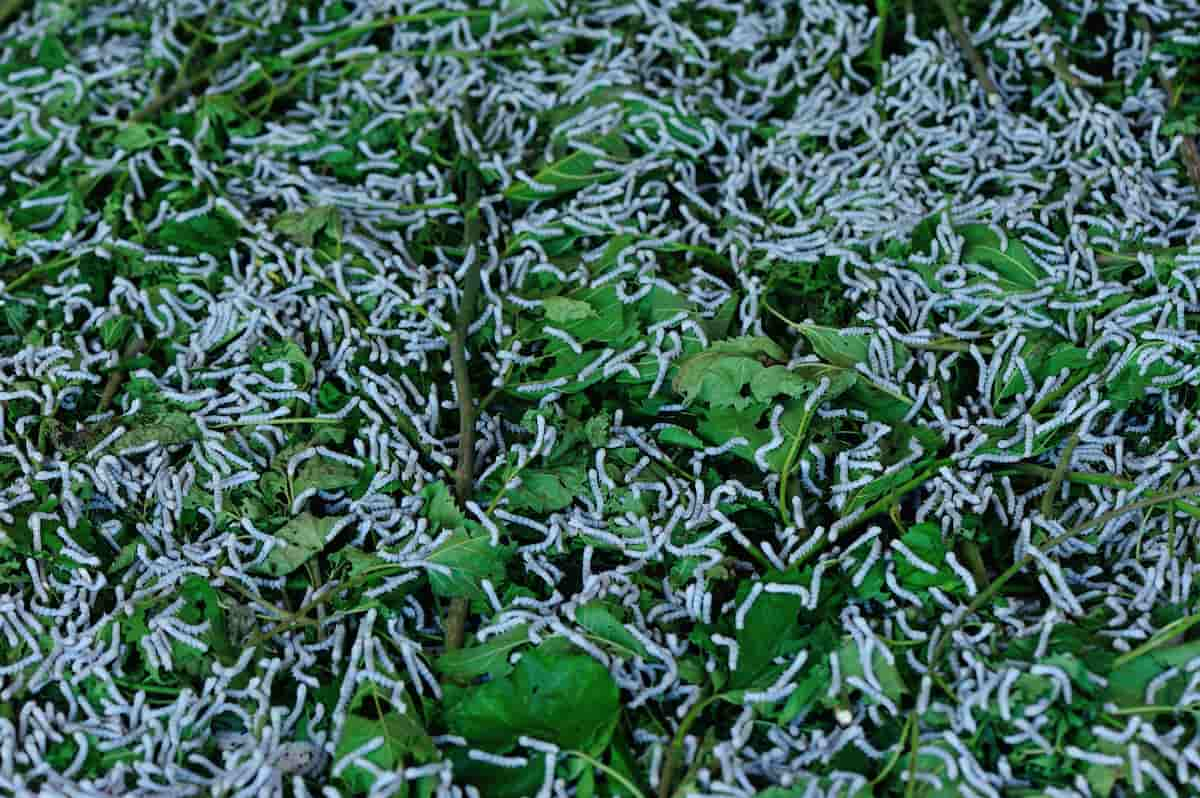Silkworm farming, or sericulture, is a rapidly growing industry in Kenya. With a high demand for silk products worldwide and the ideal climate for silkworm cultivation, Kenya is well-positioned to tap into the lucrative silk farming export market. Below we learn the steps to start your own silkworm farming business in Kenya.

How to Start Silkworm Farming/Sericulture in Kenya
Understanding the Basics of Silkworm Farming
Silkworm farming involves raising silkworms (Bombyx mori) to produce silk, a highly-valued natural fiber. Silkworms feed exclusively on mulberry leaves; their cocoons are harvested to extract silk fibers. Farming involves selecting suitable land, planting mulberry trees, raising silkworms, and harvesting cocoons.
Choosing the Right Location
The choice of location is critical to the success of your silkworm farming venture. Silkworms thrive in a temperate climate with moderate rainfall, like in the Kenyan highlands. Ideal temperatures range from 18°C to 30°C. Additionally, your farm should have access to a clean water source and be relatively free from air pollution, as silkworms are sensitive to pollutants.
Land Preparation and Mulberry Cultivation
Mulberry trees are the primary food source for silkworms. There are several mulberry varieties suitable for silkworm farming in Kenya, including Morus alba, Morus indica, and Morus nigra. These trees can be propagated through seeds, cuttings, or saplings.
- Soil preparation: Mulberry trees grow well in well-drained, fertile loam or clay-loam soils with a pH of 6.0 to 7.0. Prepare the land by plowing and harrowing to create a fine tilth. To enrich the soil, apply organic manure, such as well-decomposed cow dung or compost.
- Planting: Space the mulberry saplings or cuttings approximately 1.5 meters apart, in rows spaced 2 meters apart. Ensure that the plants receive adequate sunlight and are protected from strong winds.
- Irrigation: Mulberry trees require consistent moisture, especially during the first year. Drip irrigation saves water and distributes it evenly.
- Pruning: Regular pruning encourages branching and stimulates the production of more leaves, which results in better silkworm nutrition. Prune the trees every six months to maintain a manageable height and bushy shape.
Procuring Silkworm Eggs
You must purchase high-quality silkworm eggs from a reputable supplier or government-run sericulture center. These eggs should be free from diseases and pests. Choose a variety of silkworms that are well-suited to the Kenyan climate and have a high cocoon yield.
Rearing Silkworms
- Hatching: Maintain a clean and well-ventilated rearing room with a temperature of 24-28°C and a relative humidity of 75-85%. Place the eggs on a clean surface, like a paper or plastic tray. The eggs will hatch into larvae within 10-14 days.
- Feeding: Feed the newly hatched larvae with tender mulberry leaves, gradually transitioning to mature leaves as they grow. Provide a consistent supply of fresh, clean leaves, as silkworms are voracious eaters. Keep the rearing room clean and free from predators, like ants and spiders.
- Cocoon formation: The silkworms begin spinning their cocoons after about 25-30 days. To support this process, provide them with clean, dry, and well-ventilated spaces, such as plastic or bamboo trays. The cocoon-spinning phase lasts about 2-3 days, after which the fully-formed cocoons can be harvested.
Maintaining Optimal Rearing Conditions
Maintaining optimal environmental conditions in the rearing room is essential for healthy silkworm growth and high cocoon yield.
- Temperature: Maintain a 24-28°C for young larvae and 22-26°C for mature larvae. Use heaters or air conditioners to regulate the temperature as needed.
- Humidity: Keep relative humidity between 75-85% for young larvae and 65-75% for mature larvae. Use humidifiers or dehumidifiers to maintain ideal humidity levels.
- Ventilation: Ensure proper air circulation to prevent the build-up of harmful gases like ammonia and carbon dioxide. Use exhaust fans or natural ventilation techniques to keep the air fresh and clean.
In case you missed it: How to Start Moringa Farming in Kenya: A Step-By-Step Production Guide

Proper Sanitation and Pest Control
- Cleanliness: Regularly clean and disinfect the rearing room, trays, and equipment using mild disinfectants like potassium permanganate solution. Remove any leftover mulberry leaves and waste material to minimize the risk of contamination.
- Pest control: Implement an integrated pest management strategy that includes regular monitoring, biological control methods, and the judicious use of pesticides. Keep the rearing room free from ants, spiders, and other predators that may harm silkworms.
Harvesting and Processing Cocoons
- Harvesting: Carefully collect the cocoons by hand or using a soft brush, not damaging them. Separate the healthy, fully-formed cocoons from the damaged or diseased ones.
- Stifling: The cocoons must be stifled to prevent the silkworms from maturing into moths and breaking the silk fibers. This process can be achieved through steam, boiling water, or sun exposure.
- Reeling: This is the process of unwinding the silk fibers from the cocoons. This can be done manually or with the help of a reeling machine. The extracted silk fibers are then wound onto a reel or spool.
- Twisting: The silk fibers are twisted together to form threads, which can be used for weaving or knitting.
Marketing and Exporting Your Silk Products
- Establish a strong brand and develop high-quality products that cater to the tastes and preferences of your target market.
- Partner with local and international fashion designers, boutiques, and retailers to showcase and sell your products.
- Participate in trade shows, exhibitions, and other industry events to network with potential buyers and distributors.
- Leverage digital marketing and e-commerce platforms to reach a global audience and increase sales.
Navigating Legal and Regulatory Requirements
- Ensure that your silkworm farming business complies with all relevant Kenyan laws and regulations, including:
- Registering your business with the relevant government authorities.
- Acquiring necessary permits and licenses, such as land use permits and environmental clearances.
- Adhering to phytosanitary and quarantine regulations for the export of silk products.
In case you missed it: Techniques to Grow Crops in Drought Areas: Tips and Ideas for Beginners

Conclusion
Silkworm farming in Kenya offers immense potential for profit and growth. With proper planning, dedication, and a focus on quality, you can tap into the lucrative silk farming export market and contribute to Kenya’s economic development. Follow this guide to lay the foundation for a successful silkworm farming business and enjoy the rewards of this thriving industry.
- Ultimate Guide to Ossabaw Island Hog: Breeding, Raising, Diet, and Care
- Ultimate Guide to Juliana Pig: Raising Facts, Size, Diet, Care, and Lifespan
- Raising Lleyn Sheep: Disadvantages, Price, Uses, Characteristics, and Care
- Ultimate Guide to Meishan Pig: Breed Facts, Breeding, Raising, and Care
- Ultimate Guide to Teacup Pigs: Raising, Diet, Lifespan, Cost, and Care
- Guide to Raising Poll Dorset Sheep: Facts, Profile, Characteristics, Uses, and Care
- Ultimate Guide to Bighorn Sheep: Characteristics, Diet, Lifespan, Breeding, and Lifecycle
- Ultimate Guide to Raising Katahdin Sheep: Farming Facts, Breed Profile, Uses, and Care
- Ultimate Guide to Raising Oreo Cows: Belted Galloways Farming Facts, Profile, Uses, and Care